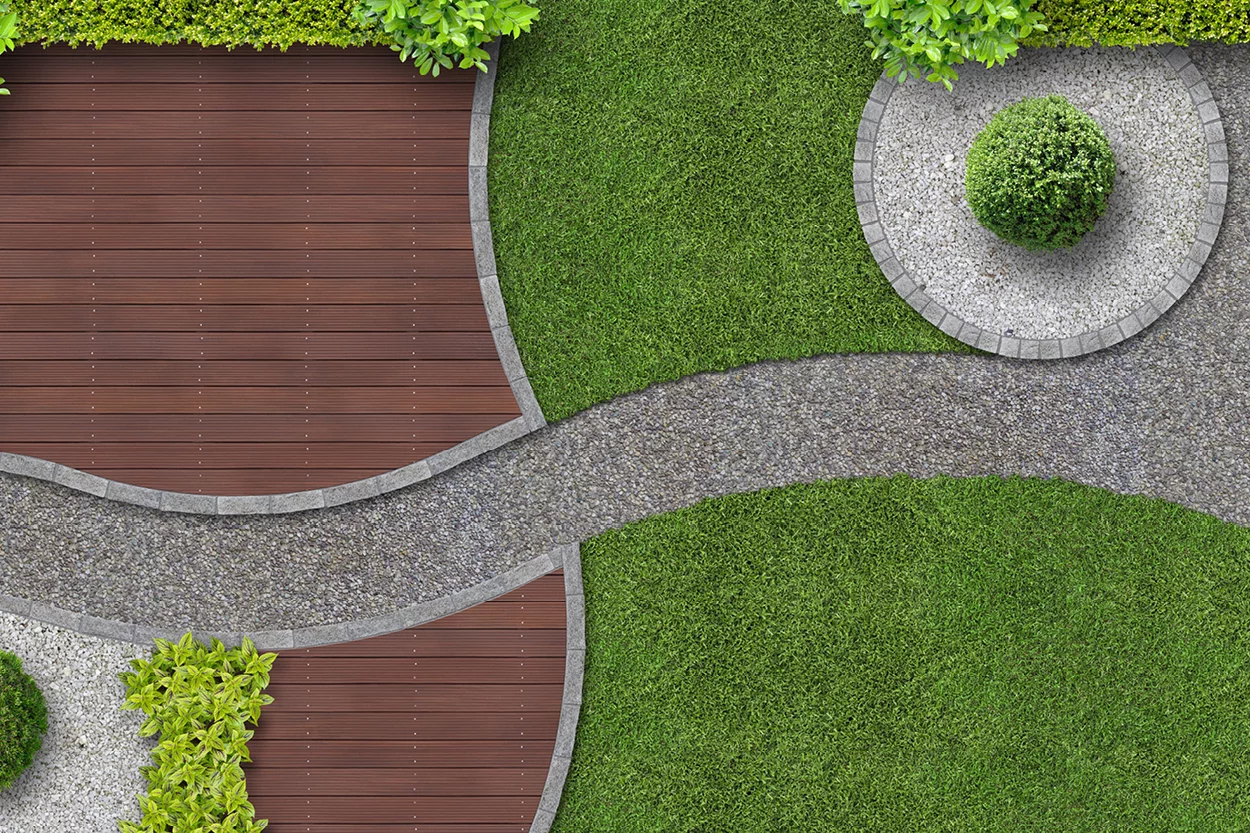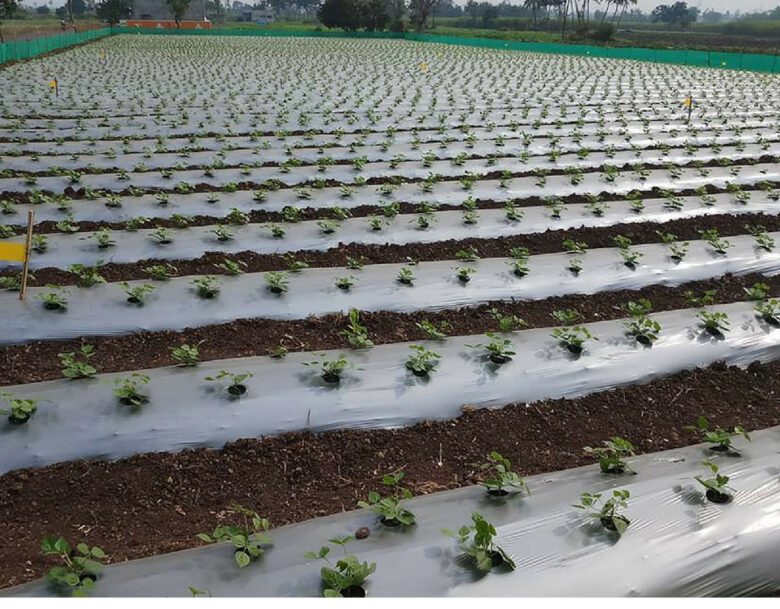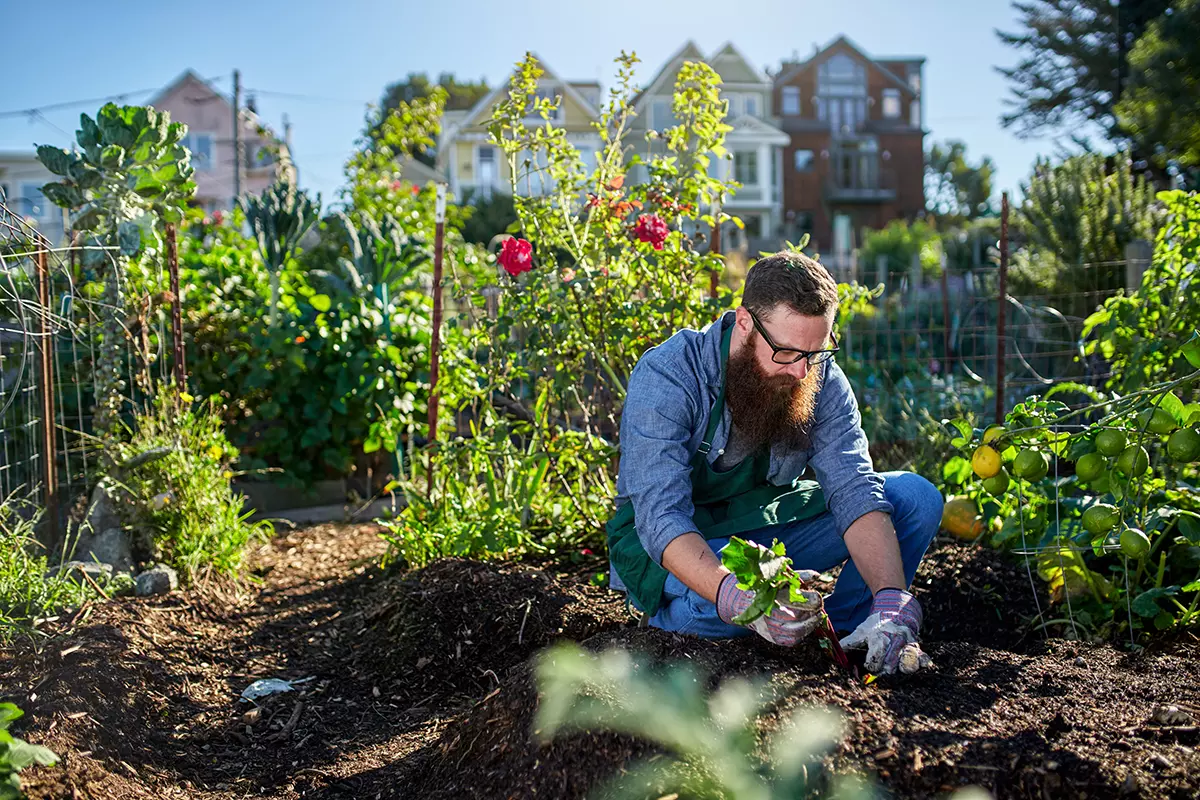Do you care about the environment, but don’t know how to apply that to your lawn and garden? Sustainable landscaping is the perfect solution for this dilemma.
In this article, you’ll learn eco-friendly tips to create a beautiful outdoor space that’s both aesthetically pleasing and kinder to the planet.
Contents
Benefits of Sustainable Landscaping

Source: themotzgroup.com
Sustainable landscaping is an eco-friendly and economical way to keep your lawn and garden green, healthy, and attractive. Perpetuating natural landscape elements such as indigenous plants, trees, soil, and bodies of water can work in harmony with the environment while providing great aesthetic enhancements to the landscape. Sustainable landscaping techniques offer a number of important benefits that can elevate not only your outdoor experience but also financial savings. If you are looking for a reliable landscaping company for your lawn, make sure to definitely check out collegefundlandscaping.com.
From improved air quality and preserved natural land to reduced home heating costs and less workload on homeowners, sustainable landscaping naturally brings environmental advantages — both outside in the landscape itself as well as on a larger scale. Here are a few key benefits that come with creating an eco-friendly landscape:
-Improved Air Quality: Plants naturally help clean the air by removing pollutants such as carbon dioxide and releasing oxygen into the atmosphere in return. A well-designed system of trees and shrubs can create seemingly miraculous results in terms of air purification—one acre of healthy forest has been known to produce enough clean air for eight homes or 819 people!
-Reduced Home Heating Costs: Porous hardscapes like asphalt and concrete are notorious for absorbing heat from hot summer sun’s—heat that then radiates into buildings at night through single pane windows or poorly constructed exteriors. Sustainable landscapes act like insulation when they’re placed strategically around houses; this helps reduce indoor temperatures through natural cooling during hot months by more than 5 degrees Fahrenheit on average!
-Preserved Natural Landscape: Another great benefit to consider when looking into sustainable landscaping is the preservation of fragile ecosystems within existing landscapes across North America—grasslands, wetlands, woodlands, meadows and other habitats uniquely support species native to certain regions (and therefore provide beneficial services). Creating smart ecosystems in backyards facilitates bio diversity amongst these endangered species while creating aesthetically pleasing gardens!
Water Conservation Strategies

Source: agricultureguruji.com
Water is an essential resource for healthy lawns and gardens, and efficient water use is an important part of sustainable landscaping. Over-watering can damage plants, water resources and lead to runoff pollution. However, under-watering will stunt plant growth and make it difficult for roots to survive. Fortunately, many simple strategies can help conserve water without compromising the health of your landscape.
Mulching: Adding a 3″-4″ layer of organic mulch around trees, shrubs, beds and planting areas conserves moisture by blocking evaporation from soil. Different types of mulch are available including shredded bark, wood chips or straw.
Irrigation: Use a soaker hose or a trickle irrigation system around the base of your plants instead of using a sprinkler which sprays huge amounts of water in evaporation-inducing droplets that are often wasted when coverage overlaps too much area. If you have an in-ground sprinkler system connect it to a rain sensor so that it will automatically shut off when it’s raining.
Rain Barrels: Collect roof runoff in rain barrels or other catchment systems so you have access to free water during dry weather periods. Make sure barrels or tanks have tight-fitting lids to prevent mosquitoes from breeding in standing water. Rain barrels conserve over 1 million gallons per year compared with traditional overhead sprinklers!
These are just a few strategies that you can implement on your property to conserve precious water while still maintaining lush landscapes! Sustainable landscaping is both achievable and worthwhile if basic principles are implemented correctly – saving you time and money while protecting our precious natural resources!
Natural Pest Management
Natural pest management is a great way to keep your lawn and garden free of pests while being eco-friendly. There are numerous methods of pest control that can be used without harming beneficial insects or the environment. One way to do this is by using natural predators, such as ladybugs, praying mantis, and other beneficial insects that feed off of destructive pests like aphids and scale bugs. Other natural methods include companion planting, physical barriers such as diatomaceous earth or covers, use of garlic deterrents or hot pepper sprays, traps placed at various points around your property to capture pests, and so much more!
The most important thing when considering natural pest management is to research sustainable practices that fit best in your landscape and climate zones. An integrated pest management system, combining both chemical and non-chemical techniques will help reduce the occurrence of common pests in your landscape while also helping to protect our environment.
Maintenance and Care for Sustainable Landscaping

Source: endeavourhomes.com.au
Caring for your sustainable landscaping is essential for ensuring that the health and beauty of your lawn and garden continue. Maintenance techniques like mowing, fertilizing, pruning, and pest control should be done in an eco-friendly manner. When possible, use natural products, such as composted organic matter and plant-based pesticides instead of synthetic chemical inputs. Re-use mulch every year to reduce waste and improve soil fertility.
Watering your lawn during the early morning before the sun rises is more efficient than midday watering because less water is lost to evaporation during the cooler morning hours. In regions where landscapes are plagued with drought or regular dry periods irrigating with greywater is an effective way of reducing water consumption while providing plants with much needed moisture.
Aeration is beneficial as it increases oxygen content in soil as well as improves drainage, which will help reduce compaction over time. It also reduces weeds that spread quickly if not controlled regularly by removing them from their roots. To maintain a healthy lawn, use a push or reel mower rather than a gasoline driven mower if possible; but if you do use a motorized mower make sure it’s energy efficient and don’t leave clippings on the ground after mowing or they will eventually form an impenetrable layer making it much harder for grass roots to connect with air and water resources.
